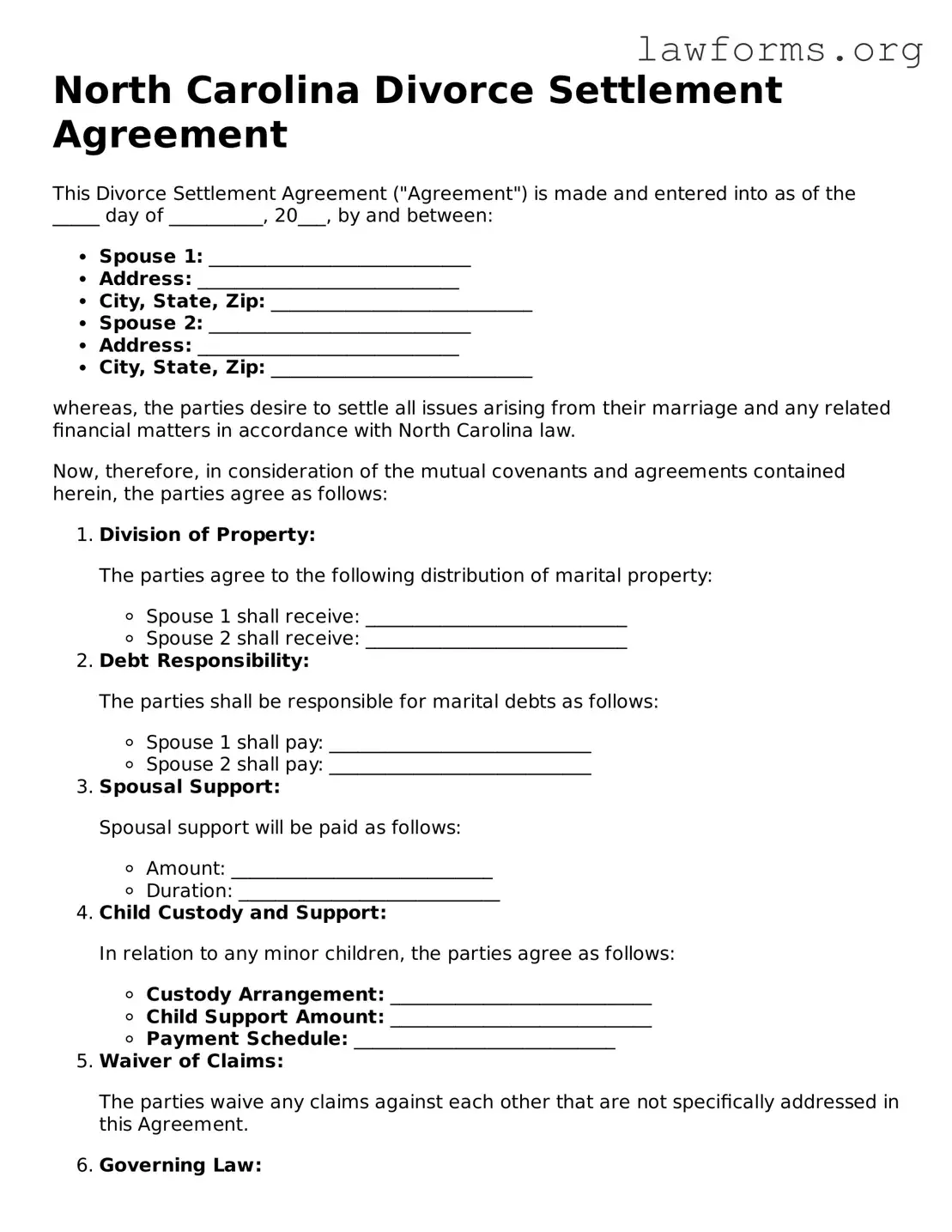North Carolina Divorce Settlement Agreement
This Divorce Settlement Agreement ("Agreement") is made and entered into as of the _____ day of __________, 20___, by and between:
- Spouse 1: ____________________________
- Address: ____________________________
- City, State, Zip: ____________________________
- Spouse 2: ____________________________
- Address: ____________________________
- City, State, Zip: ____________________________
whereas, the parties desire to settle all issues arising from their marriage and any related financial matters in accordance with North Carolina law.
Now, therefore, in consideration of the mutual covenants and agreements contained herein, the parties agree as follows:
- Division of Property:
The parties agree to the following distribution of marital property:
- Spouse 1 shall receive: ____________________________
- Spouse 2 shall receive: ____________________________
- Debt Responsibility:
The parties shall be responsible for marital debts as follows:
- Spouse 1 shall pay: ____________________________
- Spouse 2 shall pay: ____________________________
- Spousal Support:
Spousal support will be paid as follows:
- Amount: ____________________________
- Duration: ____________________________
- Child Custody and Support:
In relation to any minor children, the parties agree as follows:
- Custody Arrangement: ____________________________
- Child Support Amount: ____________________________
- Payment Schedule: ____________________________
- Waiver of Claims:
The parties waive any claims against each other that are not specifically addressed in this Agreement.
- Governing Law:
This Agreement shall be governed by and construed in accordance with the laws of the State of North Carolina.
- Amendments:
This Agreement may be amended only by a written agreement signed by both parties.
In witness whereof, the parties have executed this Agreement as of the date first above written.
- Spouse 1 Signature: ____________________________ Date: _____________
- Spouse 2 Signature: ____________________________ Date: _____________
